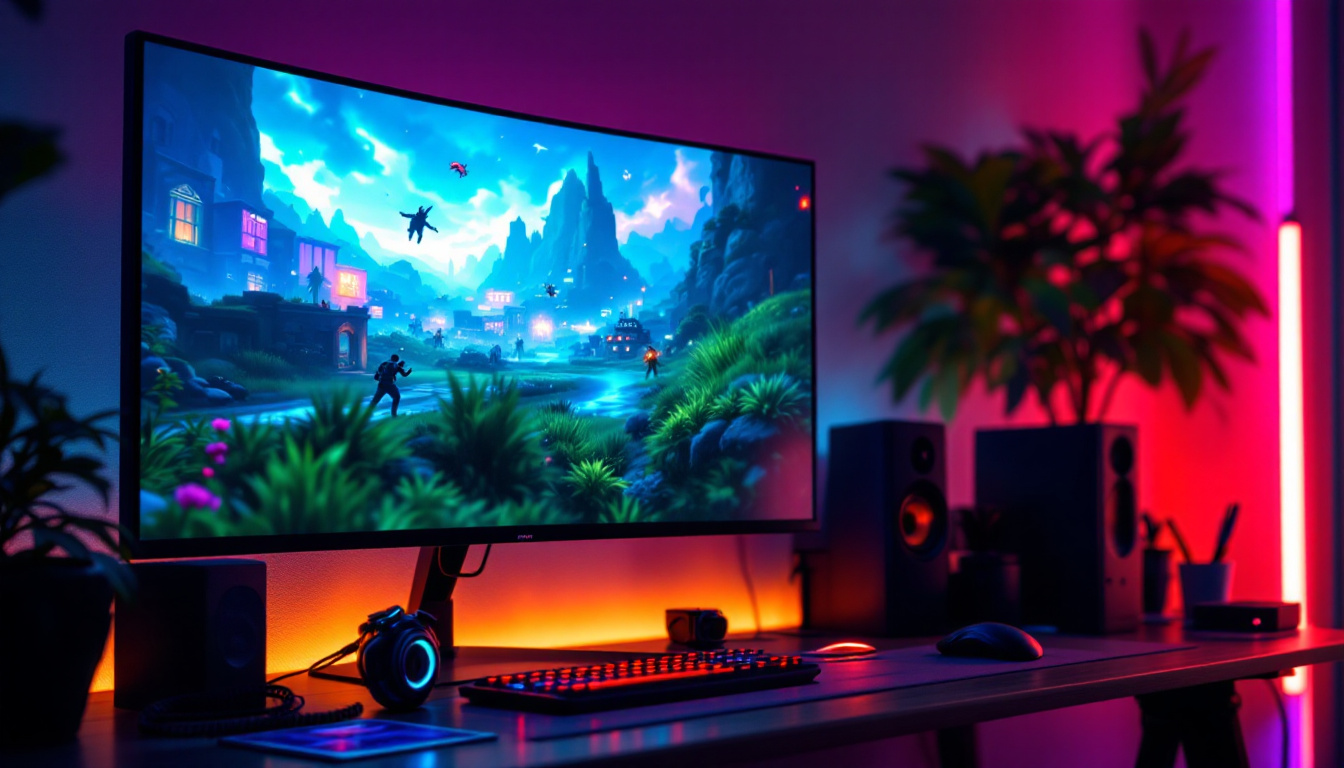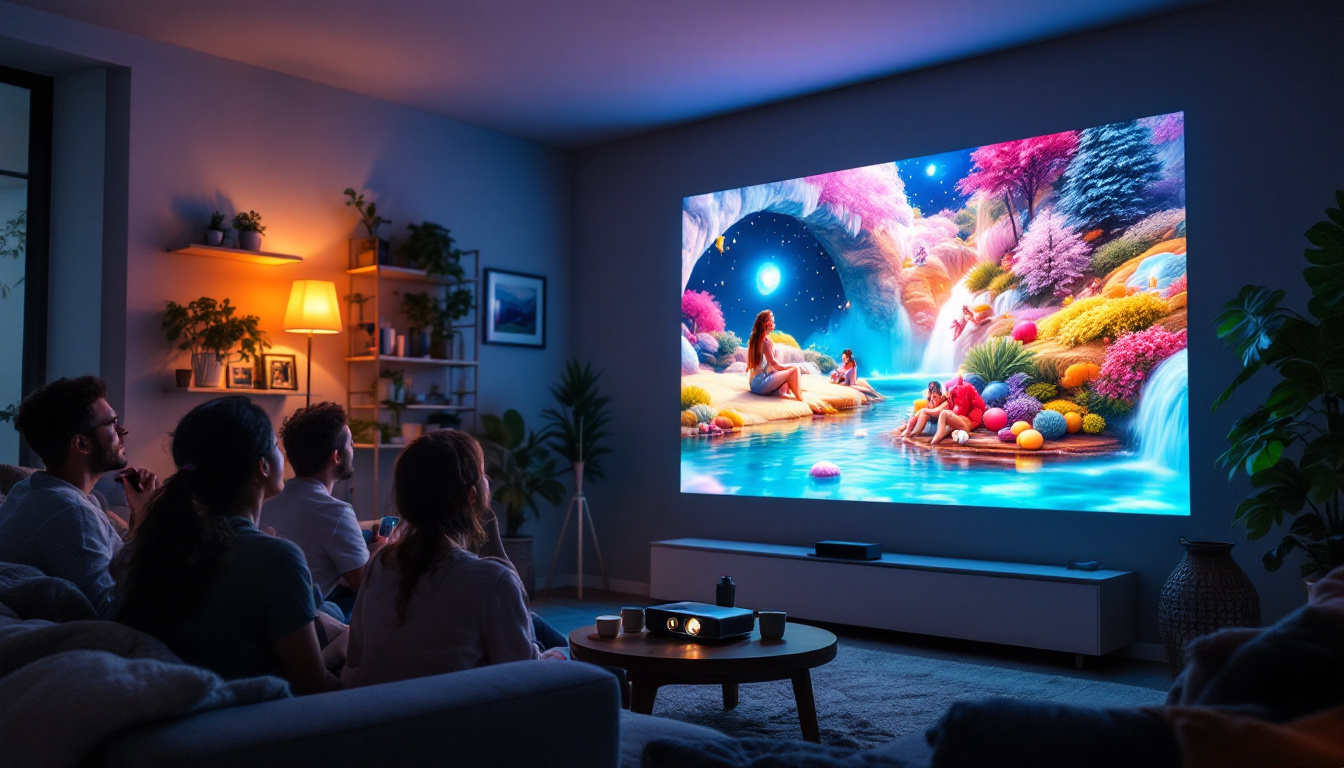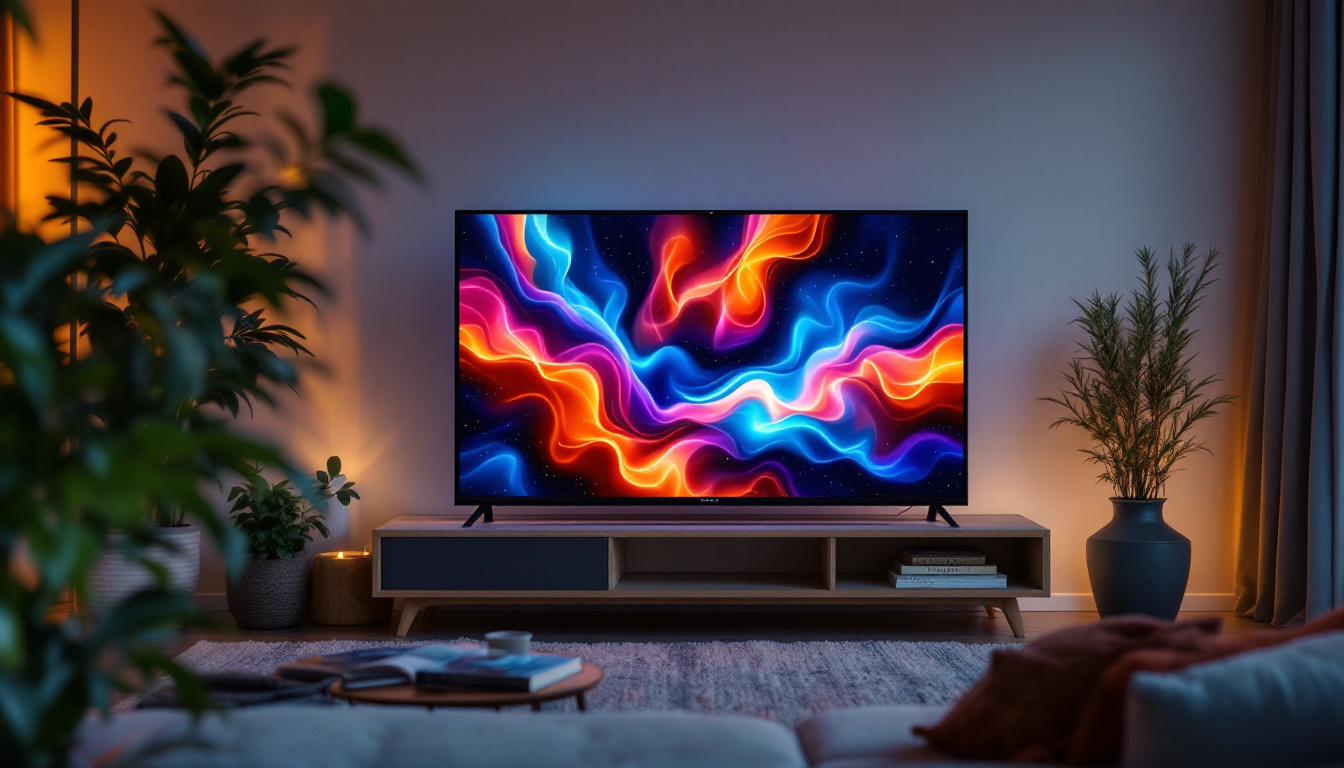In the ever-evolving world of video games, the technology behind how we experience these virtual realms plays a crucial role. One of the most significant advancements in this area is the use of LED displays. This article delves into the intricacies of LED technology, its application in video games, and how it enhances the overall gaming experience.
Understanding LED Technology
LED, or Light Emitting Diode, is a semiconductor device that emits light when an electric current passes through it. This technology has revolutionized various industries, including television, computers, and, notably, gaming. Unlike traditional display technologies, LEDs offer numerous advantages that make them particularly appealing for gaming applications.
How LEDs Work
At the core of LED technology is the principle of electroluminescence. When electrons move through a semiconductor material, they release energy in the form of light. This process is efficient, producing less heat compared to incandescent bulbs, which translates to lower power consumption and longer lifespans for the displays.
LEDs can be arranged in various configurations, such as backlighting for LCD screens or as standalone pixels in OLED displays. This flexibility allows for a wide range of applications, from small handheld devices to large gaming monitors, all benefiting from the vivid colors and sharp contrasts that LEDs can provide. Additionally, advancements in LED technology have led to the development of mini-LED and micro-LED displays, which further enhance brightness and color accuracy. These innovations are particularly exciting for gamers, as they promise even more detailed visuals and improved performance in high dynamic range (HDR) gaming.
Benefits of LED Displays in Gaming
The gaming industry has embraced LED technology for several compelling reasons. One of the most notable benefits is the enhanced visual quality. LED displays can produce deeper blacks and brighter whites, resulting in a more immersive gaming experience. The ability to render a broader color spectrum allows for more realistic graphics, making game environments more engaging.
Moreover, LED displays have faster response times compared to traditional displays. This is particularly important in fast-paced gaming scenarios where every millisecond counts. Reduced motion blur and ghosting effects lead to smoother gameplay, allowing players to react more quickly to in-game events. Furthermore, many gaming monitors now incorporate adaptive sync technologies, such as NVIDIA G-SYNC and AMD FreeSync, which work in tandem with LED displays to eliminate screen tearing and stuttering. This creates a seamless visual experience that is crucial for competitive gaming, where precision and timing can make all the difference. The combination of high refresh rates and low input lag in LED displays ensures that gamers have the upper hand in their virtual battles.
Types of LED Displays for Gaming
When it comes to gaming, not all LED displays are created equal. Various types of LED technology cater to different gaming needs and preferences. Understanding these types can help gamers make informed decisions when selecting their equipment.
LCD with LED Backlighting
One of the most common types of displays used in gaming is the LCD with LED backlighting. This technology combines the liquid crystal display (LCD) with LED backlights to enhance brightness and contrast. These displays are widely available and offer a good balance between performance and affordability.
While they provide excellent color reproduction and brightness, LCDs with LED backlighting may not achieve the same level of black depth as OLED displays. However, they remain a popular choice for gamers due to their versatility and cost-effectiveness. Additionally, many modern LCDs come equipped with features like adaptive sync technology, which helps eliminate screen tearing and stuttering, further enhancing the gaming experience. This makes them suitable for a wide range of gaming genres, from fast-paced shooters to immersive RPGs.
OLED Displays
Organic Light Emitting Diode (OLED) displays represent a significant advancement in display technology. Unlike LCDs, which require backlighting, OLEDs produce their own light at the pixel level. This capability allows for perfect blacks, as individual pixels can be turned off completely.
For gamers, this means enhanced contrast ratios and a more vibrant color palette. The fast response times of OLED displays also contribute to a more fluid gaming experience, making them a preferred choice for competitive gamers. However, the higher price point of OLED technology can be a consideration for many. Moreover, OLED displays often feature wider viewing angles, which can be particularly beneficial for multiplayer gaming sessions where multiple players are gathered around a single screen. As the technology continues to evolve, manufacturers are also working on solutions to mitigate issues like burn-in, making OLED an increasingly viable option for long gaming sessions.
The Role of Refresh Rate and Resolution
When discussing LED displays in gaming, two critical factors often come into play: refresh rate and resolution. Both aspects significantly influence the quality of the gaming experience and are essential considerations for gamers seeking optimal performance.
Refresh Rate Explained
The refresh rate of a display, measured in hertz (Hz), indicates how many times per second the image on the screen is updated. A higher refresh rate results in smoother motion, which is particularly beneficial in fast-paced gaming genres such as first-person shooters and racing games.
Standard refresh rates for gaming monitors typically range from 60Hz to 240Hz. While 60Hz may suffice for casual gaming, competitive gamers often prefer higher refresh rates to gain a competitive edge. Displays with refresh rates of 144Hz or higher can provide a noticeable improvement in gameplay fluidity.
Resolution and Its Impact
Resolution refers to the number of pixels displayed on the screen, typically represented as width x height (e.g., 1920×1080 for Full HD). Higher resolutions lead to sharper images and greater detail, enhancing the overall gaming experience. Common resolutions include Full HD (1080p), Quad HD (1440p), and Ultra HD (4K).
While higher resolutions can improve visual fidelity, they also demand more from the gaming hardware. Gamers must ensure that their graphics cards and systems are capable of handling the increased workload associated with higher resolutions, especially for demanding titles.
Choosing the Right LED Display for Gaming
Selecting the ideal LED display for gaming involves considering various factors that align with individual preferences and gaming styles. Here are some key aspects to keep in mind when making a choice.
Budget Considerations
Budget is often a primary consideration when purchasing a gaming display. LED technology is available across a wide price range, from affordable options to high-end models. Gamers should assess their budget and determine the features that are most important to them, such as refresh rate, resolution, and panel type.
While it may be tempting to opt for the cheapest option, investing in a quality display can significantly enhance the gaming experience. A well-balanced approach that considers both performance and cost is advisable.
Screen Size and Viewing Distance
The size of the display plays a crucial role in the gaming experience. Larger screens can provide a more immersive experience, especially for open-world games and visually stunning titles. However, the ideal screen size also depends on the viewing distance.
For example, a 27-inch monitor may be perfect for a desk setup, while a larger screen may be suitable for a more spacious gaming area. Gamers should consider their setup and how far they will be sitting from the screen to determine the appropriate size.
Panel Technology
Different panel technologies, such as IPS, TN, and VA, offer varying advantages and disadvantages. In-Plane Switching (IPS) panels are known for their excellent color accuracy and wide viewing angles, making them suitable for visually rich games. Twisted Nematic (TN) panels, on the other hand, typically offer faster response times but may sacrifice color quality.
Vertical Alignment (VA) panels provide a middle ground, offering good contrast ratios and decent response times. Understanding the strengths and weaknesses of each panel type can help gamers choose a display that aligns with their gaming preferences.
Future Trends in LED Display Technology
As technology continues to advance, the future of LED displays in gaming looks promising. Innovations are on the horizon that may further enhance the gaming experience and push the boundaries of visual fidelity.
MicroLED Technology
MicroLED technology is an emerging trend that promises to revolutionize display technology. Similar to OLED, MicroLED displays consist of individual pixels that emit their own light. However, MicroLEDs offer several advantages, including higher brightness levels and improved durability.
This technology could lead to displays that combine the best features of both OLED and traditional LED displays, offering exceptional color accuracy, contrast, and longevity. As MicroLED technology matures, it may become a game-changer for gamers seeking the ultimate visual experience.
Adaptive Refresh Rates
Adaptive refresh rate technologies, such as NVIDIA’s G-SYNC and AMD’s FreeSync, are gaining traction in the gaming community. These technologies synchronize the refresh rate of the display with the frame rate of the graphics card, reducing screen tearing and stuttering.
As more displays incorporate adaptive refresh rate capabilities, gamers can expect smoother gameplay and enhanced visual performance. This trend is particularly beneficial for competitive gamers who rely on precision and responsiveness in their gameplay.
Conclusion
The integration of LED displays in the gaming world has transformed the way players engage with their favorite titles. With advancements in technology, gamers now have access to displays that offer stunning visuals, faster response times, and improved overall performance.
When selecting an LED display, it is essential to consider various factors, including budget, screen size, and panel technology. As the industry continues to innovate, the future of gaming displays looks bright, promising even more immersive and visually captivating experiences for players around the globe.
In summary, understanding LED technology and its implications for gaming can empower players to make informed choices, ultimately enhancing their gaming adventures. Whether through vivid colors, faster refresh rates, or emerging technologies, LED displays are set to remain a cornerstone of the gaming experience for years to come.
Discover the Future of Gaming with LumenMatrix
Ready to elevate your gaming experience with the latest in LED display technology? Look no further than LumenMatrix, a pioneer in crafting immersive visual solutions that bring your games to life. From the comfort of your home to the excitement of an outdoor gaming event, our diverse range of products, including Indoor and Outdoor LED Wall Displays, Vehicle LED Displays, and more, cater to every gaming scenario. Embrace the future of gaming and check out LumenMatrix LED Display Solutions today to transform how you play, engage, and win.































